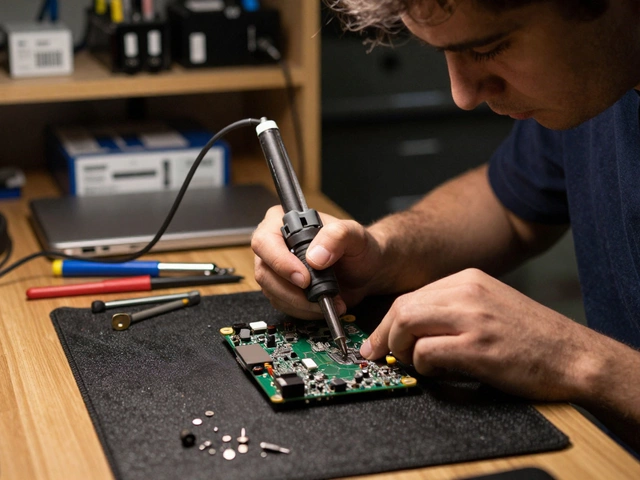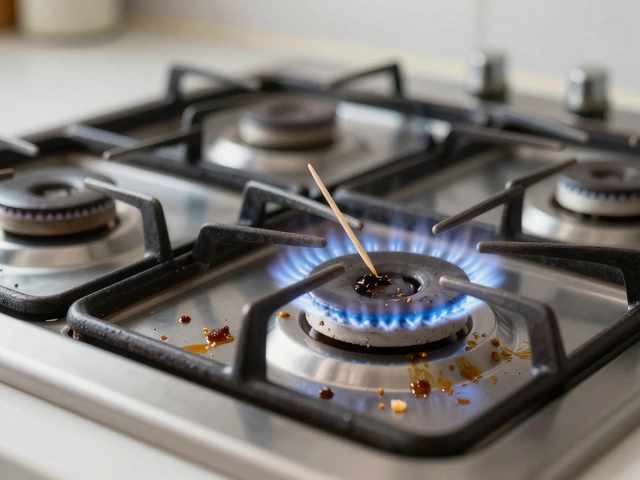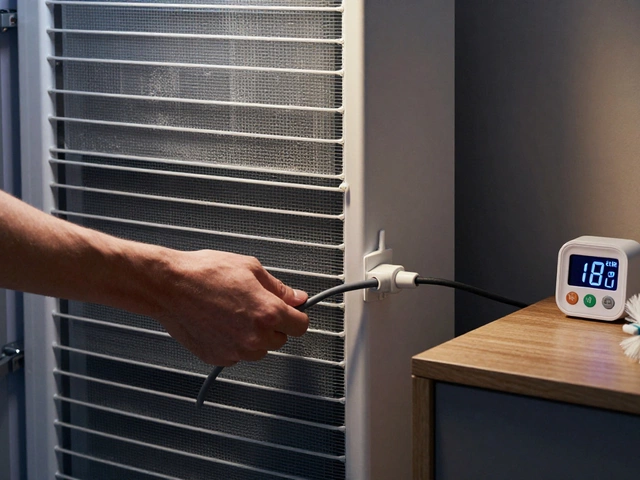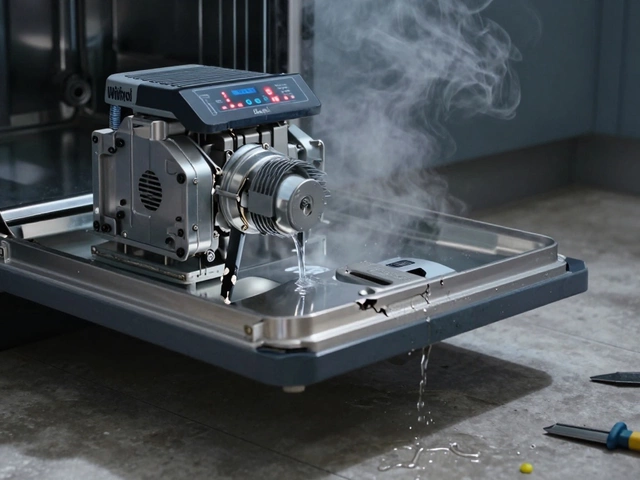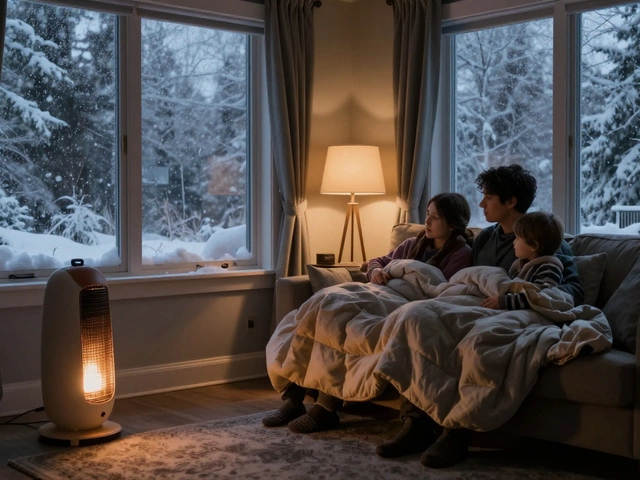Ever been in the middle of a shower when suddenly, the water turns icy cold? Frustrating, right? There could be a bunch of reasons your hot water decided to take a day off. Don't worry, though, most of them are easier to fix than you might think.
First things first, check your power supply. If you have an electric water heater, a tripped breaker might be the culprit. It happens a lot and can be the simplest fix. For gas units, make sure the pilot light hasn't gone out. A quick check can save you from a chilly surprise.
Next up, let's talk thermostats. If the power seems fine, the thermostat might be acting up. It's like the brain of your water heater, and if it's on the fritz, the water won't get hot. Checking this is a bit more involved but could solve your problems.
Common Issues
So, your water heater is acting up, huh? Let's dig into the most common issues that cause the dreaded cold-water surprise. Knowing these can save you time and, often, a call to the plumber.
Tripped Circuit Breaker
If you've got an electric water heater, one of the most frequent culprits is a tripped circuit breaker. This little guy is designed to cut off power to prevent electrical overloads. Check your home's electrical panel and flip the switch if it's off. Simple as that!
Pilot Light Issues
For those dealing with a gas water heater, the pilot light might be the troublemaker. It's the small flame that ignites the gas burner. If it's gone out, your water won’t heat. Relighting it can often solve the problem. Just make sure you follow the manufacturer’s instructions.
Thermostat Problems
The thermostat controls the water temperature. If it's malfunctioning, your water might be lukewarm or stone cold. Sometimes, a reset or replacement is necessary. It's worth checking its settings to ensure nothing's off.
Faulty Heating Element
In electric heaters, the heating elements are responsible for warming up the water. Over time, they can wear out. A defective element might need replacing to get your hot water back.
Water Leaks
Leaks can also be a sneaky cause. Whether from a loose valve or a crack in the tank, leaks lead to inefficiencies in heating. Spotting leaks early can prevent bigger troubles down the road.
| Common Problem | Solution |
|---|---|
| Tripped Circuit Breaker | Check and reset the breaker |
| Pilot Light Out | Relight the pilot light |
| Thermostat Malfunction | Reset or replace thermostat |
| Faulty Heating Element | Replace the heating element |
| Water Leaks | Fix leaks quickly |
Keep these common issues in mind for your next hot water hiccup. A bit of knowledge goes a long way in keeping your system running smoothly.
Checking the Power Supply
When your water heater suddenly stops working, the power supply is the first thing you should check. This is especially true if you're dealing with an electric unit. It's amazing how often a blown fuse or a tripped circuit breaker is the main issue.
For Electric Water Heaters
If your electric water heater isn't doing its thing, head straight to your home's electrical panel. Here's what you need to do:
- Locate the breaker panel. It's usually in a utility room or basement.
- Open the panel and look for the breaker labeled 'water heater'.
- If the breaker has tripped to the 'off' position, simply switch it back to 'on'. If it won't stay on, there might be a bigger issue that needs a pro's touch.
Keep in mind that electric water heaters have their own dedicated circuit, so if it's consistently tripping, there's likely an underlying problem that needs attention.
For Gas Water Heaters
Gas units don't use the electrical system in the same way, but the pilot light needs checking:
- Find the pilot light assembly. This is usually beneath the tank with a small access cover.
- Is the pilot light out? If so, follow the instructions on the unit for relighting.
- If it won't stay lit, you might have a faulty thermocouple, which would need replacing.
Common Electrical Issues Table
Here's a quick look at some common electrical issues with their signs and potential solutions:
| Issue | Sign | Solution |
|---|---|---|
| Tripped breaker | Breaker in 'off' position | Switch back to 'on' |
| Blown fuse | Fuses look burnt | Replace fuse |
| Faulty wiring | Sparks or frayed wires | Hire an electrician |
Checking the power supply might sound basic, but it's a crucial step in diagnosing why your hot water can't make it to the party. Knowing what to look for and how to handle these simple electrical tasks can spare you a cold shower and an unnecessary service call.
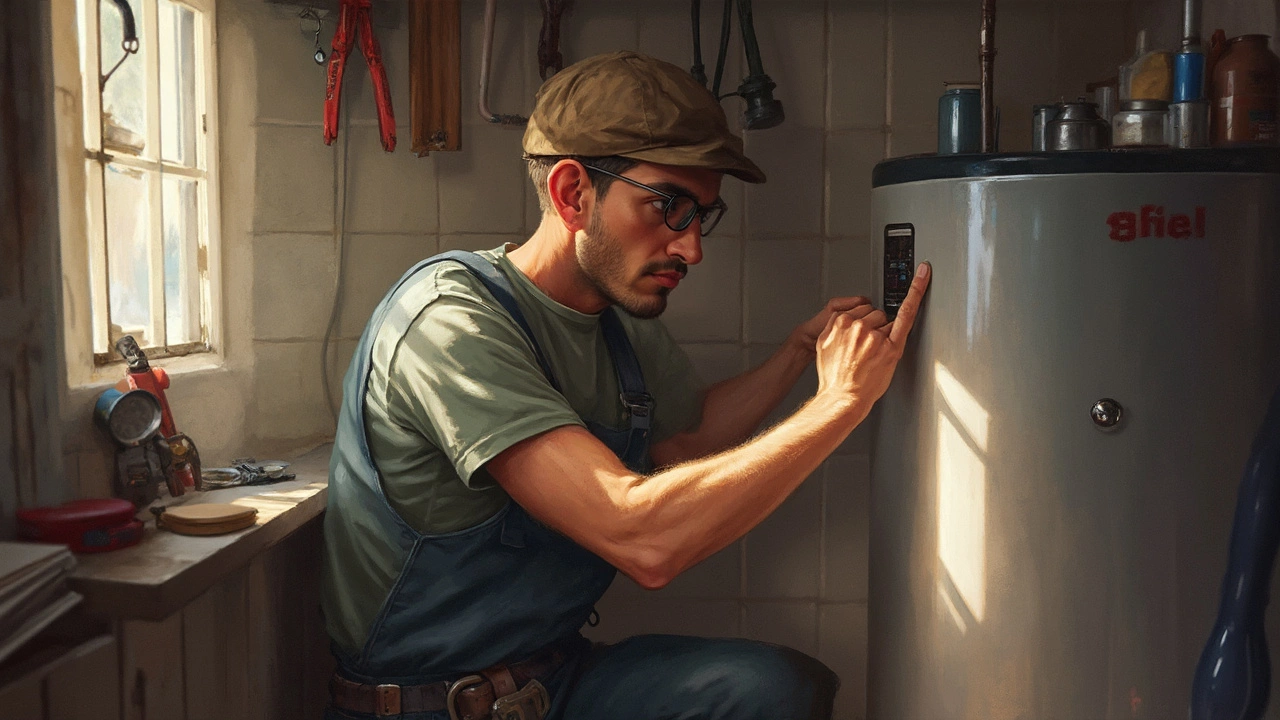
Inspecting the Thermostat
So, your power's on, and the circuit's behaving, but still no hot water? The thermostat could be the mischief-maker here. It's that little gadget in charge of keeping your water at the perfect temperature.
Start by turning off the power to your water heater—safety first! Then, remove the access panel on the unit. You should see a bunch of wires and a dial. That's your thermostat's lair.
Step-by-Step Guide to Checking the Thermostat
- Get a multimeter. If you don't have one, borrow it from a neighbor or grab one from your local hardware store. It's a handy tool for checking the thermostat's functionality.
- With the unit off, detach the wires from the thermostat. You'll often find two sets of wires connected to two screws on the thermostat.
- Set your multimeter to the lowest ohm setting. You’re looking to see if the thermostat is allowing current to pass through.
- Touch one probe of the multimeter to one screw and the other probe to the other screw. If you get a reading of zero or close to it, your thermostat is likely working. If it’s off the charts, you might need a new thermostat.
Even if you figure out the thermostat is at fault, replacing or fixing it isn’t a DIY job for everyone. Call in a pro if you're not comfortable handling it.
Interesting fact—most water heaters have more than one thermostat; typically, there’s an upper and a lower thermostat. If one fails, it might still affect your overall hot water performance.
Regular Maintenance Tips
Keeping your water heater in tip-top shape isn’t all that hard, but it does require a bit of regular attention. These simple maintenance tips can help ensure you don't suddenly find yourself without hot water.
Check the Temperature
Start by checking the thermostat setting. Most water heaters are set to 140 degrees Fahrenheit, but lowering it to 120 degrees can reduce energy costs and prevent scalding without making much difference in water warmth. Adjusting the thermostat once a year to ensure it's accurately heating is a smart move.
Flush the Tank Annually
Over time, sediment can build up in the bottom of the tank. This stuff can make your heater work harder, reducing its lifespan and efficiency. Draining a few gallons from the tank every year helps clear out any dirt buildup. Simply:
- Turn off the power to the heater.
- Attach a hose to the drain valve at the bottom.
- Let the water run into a bucket until it comes out clear.
Inspect the Anode Rod
The anode rod is crucial as it attracts minerals in the water, preventing them from corroding the tank itself. Checking it every few years and replacing it if it's heavily corroded can greatly extend the life of your water heater.
Insulate the Pipes
Adding some insulation to your water heater pipes can prevent heat loss and improve energy efficiency, especially if the heater is located in a chillier part of the house. Foam pipe sleeves are inexpensive and simple to install around pipes.
Regular maintenance is like giving your heater a mini spa day—keeps it happy and running smoothly. Following these tips can help avoid unexpected cold showers and make the most of your investment.

